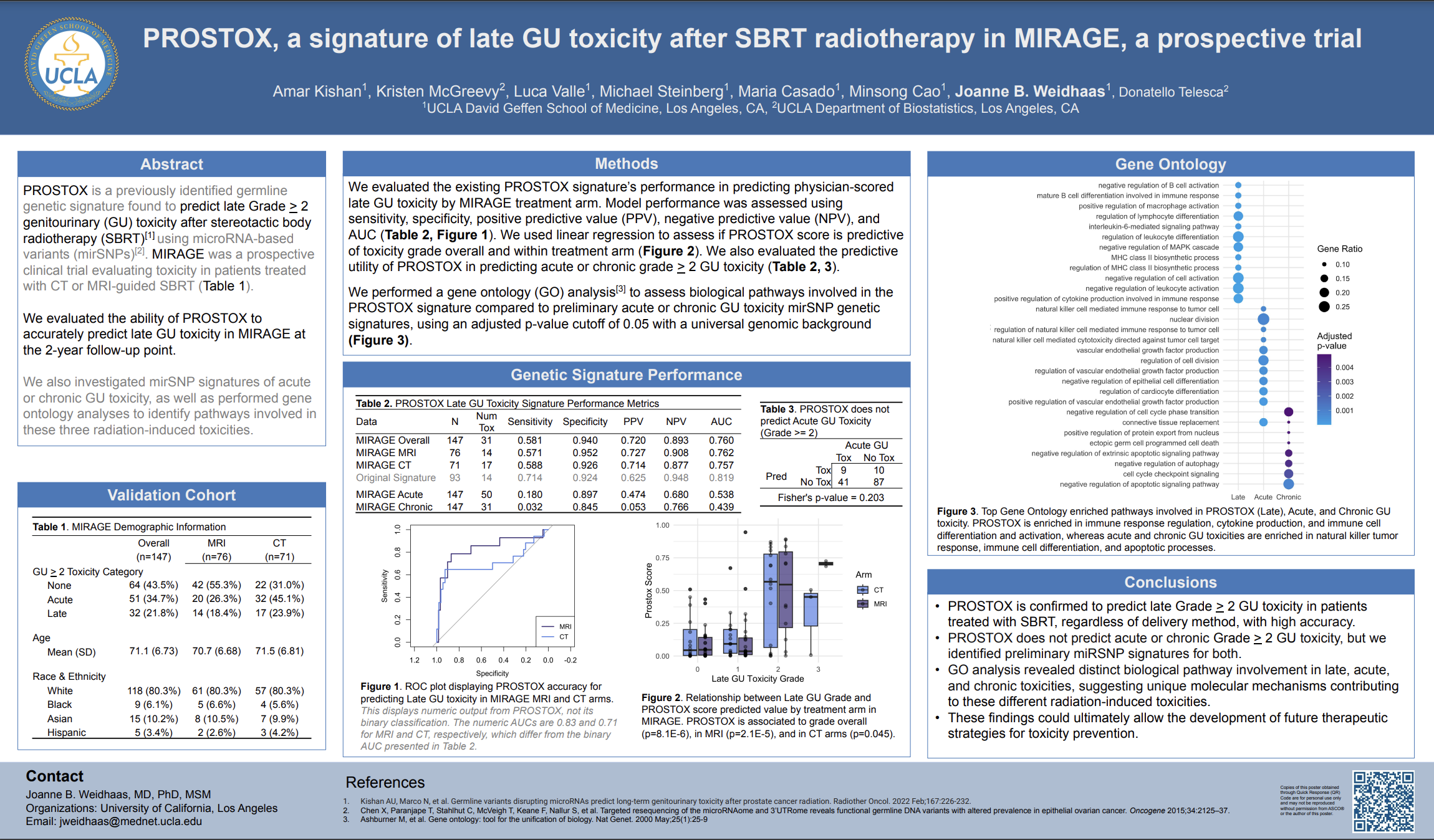
This year, approximately 300,000 men in the U.S. were diagnosed with prostate cancer, bringing the total to over 3.3 million cases.1 Nearly half of those with localized prostate cancer undergo radiation therapy, including stereotactic body radiation therapy (SBRT).
However, about 16% of men treated with SBRT develop genitourinary (GU) toxicity within three to six months after treatment, resulting in urinary frequency, urgency, or incontinence. While often managed with medication, these symptoms may not resolve and can negatively affect one’s quality of life.
Currently, there is no reliable way to predict who will develop late GU toxicity. Identifying patients at high or low risk before therapy starts can help guide safer, more personalized care.
Researchers at UCLA’s Department of Radiation Oncology addressed this need through the MIRAGE prospective clinical trial, confirming the effectiveness of PROSTOX—a genomic test that predicts late grade ≥ 2 GU toxicity from SBRT using a patient’s genetic profile.2
Key findings:
- PROSTOX predicts late GU toxicity independent of the delivery method (MRI- vs. CT-guided SBRT).
- PROSTOX identifies a genetic signature specific to late toxicity, distinct from acute or chronic toxicity.
- Gene ontology analysis3 reveals distinct biological pathways underlying late, acute, and chronic toxicities.
Personalizing Prostate Cancer Treatment
The findings of the MIRAGE study support that PROSTOX is a powerful tool for personalizing prostate cancer treatment. Furthermore, the discovery that there are distinct genetic pathways for acute and chronic GU toxicities suggests the potential to develop therapeutic strategies aimed at toxicity prevention in the future.
Download the MIRAGE poster here.
References
- https://www.cancer.org/cancer/types/prostate-cancer/about/key-statistics.html
- Kishan AU, et al. Germline variants disrupting microRNAs predict long-term genitourinary toxicity after prostate cancer radiation. Radiother Oncol. 2022 Feb;167:226-232.
- Ashburner M, et al. Gene ontology: tool for the unification of biology. Nat Genet. 2000 May;25(1):25-9
